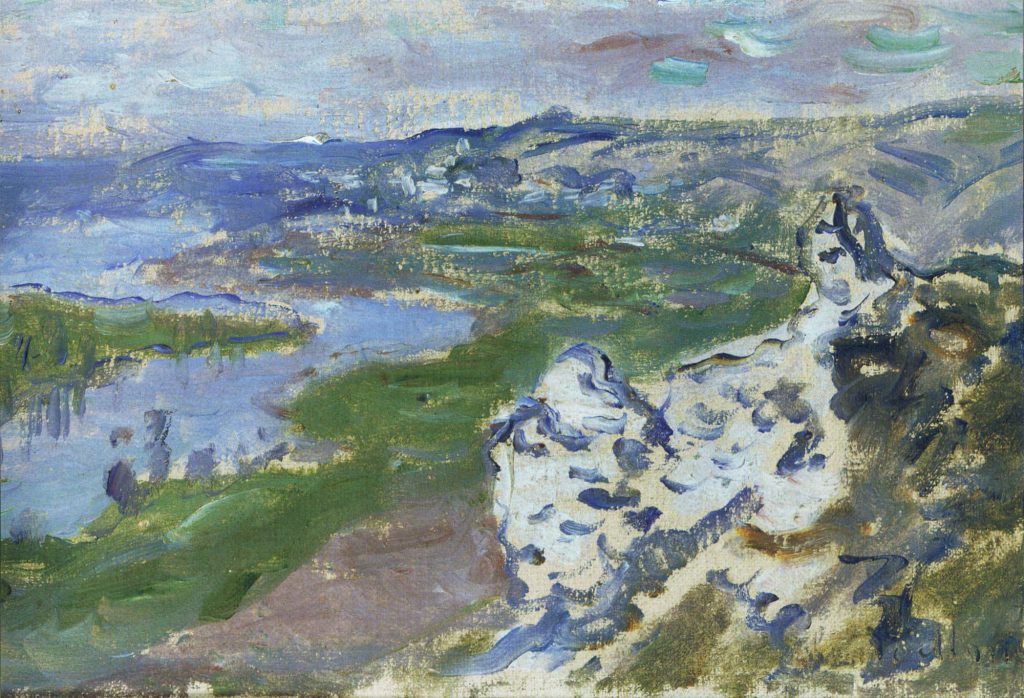A recent piece in The Tablet called “The Great Debasement” articulates a phenomenon that has spread like a fungus these past few years: namely, art and its almost complete appropriation by the ideology of “cultural studies analysis.”
“[T]he debasement is nearly complete,” writes Alice Gribbin. “The institutions tasked with the promotion and preservation of art have determined that the artwork is a message-delivery system.”
God forbid we should simply gaze upon, say, a painting that might otherwise expand our hearts, spur our imaginations, or make us weep. At every turn phrases like “the hierarchies of race,” “colonialist influences,” and “unequal impacts” turn us away from transcendence and toward identity politics.
The same creeping groupthink has bled into music and literature. Or as Gribbin puts it, “The figure of the contemporary artist we know today is an invention of the bureaucrats.”
I’m forever on the lookout for the artist who is not an invention of the bureaucrats. Recently I came across a small gem of a book originally published in 1964. “Chantemesle: A Normandy Childhood,” (Eland Publishing, $13) by Robin Fedden (1908-1977), an English writer, diplomat, and mountaineer.
Fedden’s artist parents were English — he later attended Cambridge — but for a time when he was a boy they rented a charming old house on the banks of the Seine. “Chantemesle” is a coming-of-age story, a lyrical evocation of landscape, an elegy for all the places we loved as children: that were secret, and special, and sacred, and therefore remain forever ours alone.
It’s also a summer book: “The feel of the air that moves through the house, stirring the curtains, is the feel of June” runs the opening paragraph. “The doors are open, and whichever way I look the garden is a continuation, a green room beyond. There is neither in nor out: not for me or for the bees that take shortcuts from window to window. Even the birds sometimes make no distinction, and a nightjar blinked throughout a summer morning from the top of a bookcase beside an image of the aged St. Anne.”
On one side of the house are meadows and the Seine with its islands; on the other lies “the abrupt hill, the côte as the natives call it, sinewy and dry.”
The little boy, a solitary child, has the run of the landscape and spends his days dreamily exploring.
“The hillside was wild. Adders basked in the sun and badgers outside their setts made mounds like miniature earthworks.” Mist rises in autumn, obscuring the valley below; creeping to the base of the chalk bluffs.
The only other figure “familiar with every copse and cave and with the passage of days and seasons” is Battouflet, an old blind hermit who lives in a hovel on the hillside and for decades has lent the côte “his protection.”
The hillside is crisscrossed with ancient vineyard trails. “Battouflet’s chief concern was the vegetation on the ghostly paths. Cutting and thrusting impatiently, his stick kept open a vestige of the vineyard tracks which would otherwise have been overgrown and lost. It was his single self-imposed task.”
In all weathers, Battouflet tramps the slopes, sometimes breaking into “scabrous songs” as he labors. Anyone who has followed a vocation will recognize that call from afar; the unseen urge that keeps us doggedly at our work though no one seems to care or notice.
As the côte’s only inhabitants, and in spite of the 50 years between them, the old man and the young boy became close friends, greeting each other as partners, “the sole proprietors of a large demesne”: comparing notes, exchanging news of the ravens, the stoats, the spring anemones, the ripening apricots.
As the years pass, Fedden comes of age, meets other young people from the neighboring villages, and falls in love. He spends a Christmas at Chantemesle and at a midnight skating party comes across Battouflet, perched alone on the hillside above, listening approvingly to the laughter of the young people, sniffing the air for signs of a thaw.
Fedden goes back to England for school, returning to Normandy only in the summer.
Walking the trails one morning, he comes across Battouflet’s lifeless body, lying at the edge of the copse: his stick beside him, his jacket wet with dew.
“His death was a small episode in the long history of the côte, but it marked for me the end of an epoch. No one would now attempt to clear the paths; nor, I realized, should I much longer leave my wake as I passed through the clinging thickets. Time was drawing me, unwilling as Battouflet, from the hillside.”
I thought about Battouflet — an old blind man toiling in the vineyard — long after I turned the last page of “Chantemesle.” Like Battouflet our job is to keep the paths clear, maybe for just one other person. Like Battouflet, we can only hope to die at our watch.
The thought police would have managed to make something ugly of the story: Fedden guilty of white privilege, the côte a harbinger of climate change, the tender memories of an unusual friendship a symbol of the patriarchy.
Long may Battouflet live. And may God preserve us from the bureaucrats.

